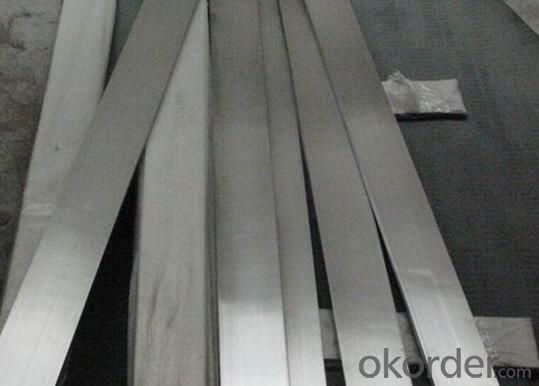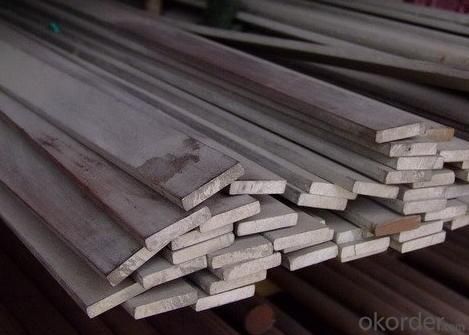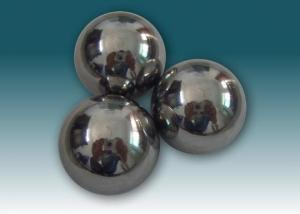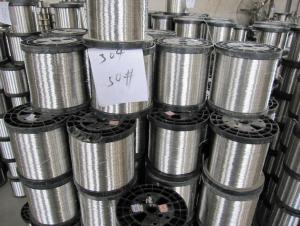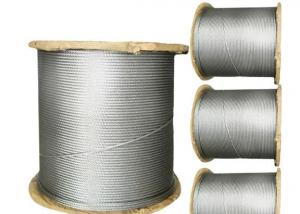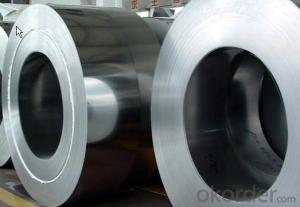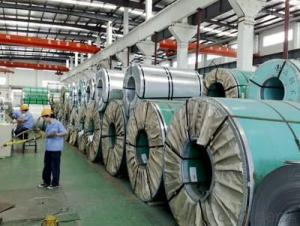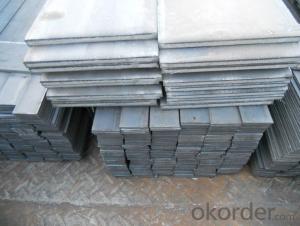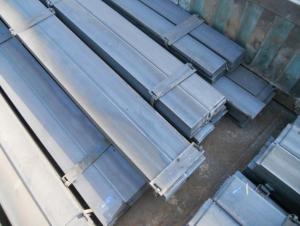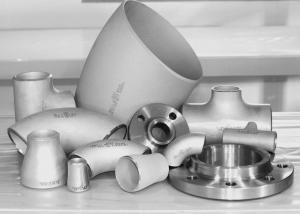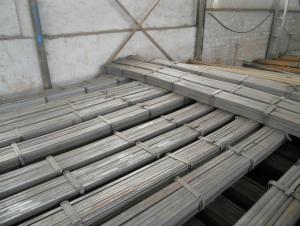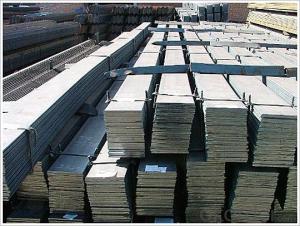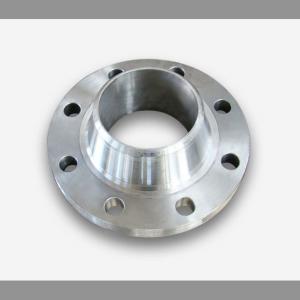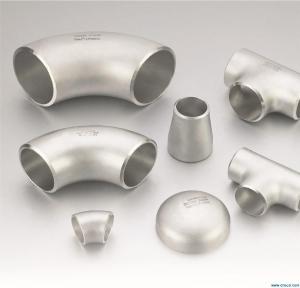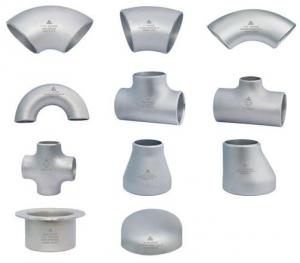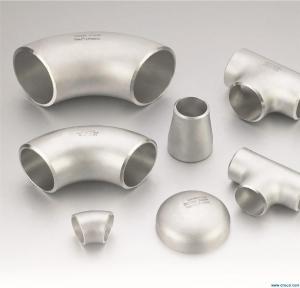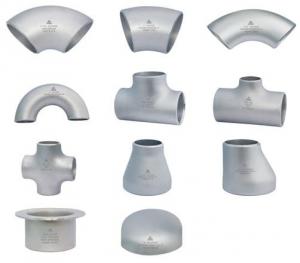Flat Stainless Steel with High Quality for Construction
- Loading Port:
- China main port
- Payment Terms:
- TT or LC
- Min Order Qty:
- 50 m.t.
- Supply Capability:
- 10000 m.t./month
OKorder Service Pledge
OKorder Financial Service
You Might Also Like
Specification of Flat Stainless Steel with High Quality for Construction:
Commodity: Hot Rolled Steel Flat Bar
Standard: GB;JIS
Material: Q195-Q235
Brand name: FLATSPACE
Origin place: China
Thickness: 3mm-30mm
Width:20mm-200mm
Length: Max 12m
Certification: SGS/BV
Chemical composition of Q235
Alloy No | Grade | Element(%) | ||||
C | Mn | S | P | Si | ||
Q235 | B | 0.12—0.20 | 0.3—0.7 | ≤0.045 | ≤0.045 | ≤0.3 |
Physical properties of Q235
Alloy No | Grade | Yielding strength point(Mpa) | Tensile strength (Mpa) | Elongation after fracture(%) | ||||||
Thickness (mm) | Thickness (mm) | |||||||||
≤16 | >16--40 | >40--60 | >60--100 | ≤16 | >16--40 | >40--60 | >60--100 | |||
≥ | ≥ | |||||||||
Q235 | B | 235 | 225 | 215 | 205 | 375--500 | 26 | 25 | 24 | 23 |
Usage/Applications of Flat Stainless Steel with High Quality for Construction:
Widely used for construction, Machinery manufacturing, Iron tower steel structure, Shipbuilding; Steel grating, Staircase, Bridge, Viaduct, Railway spare parts, Boilers making etc.
Production Flow of Hot Rolled Flat Steel with High Quality for Sale:
The steel flat bar is made through three processes:
1.Feeding the material: Feeding the row material (the steel plate) to Slitting Line.
2.Slitting:The steel plate would be slitted into expected width by lengthways cutter.
3. Leveled and cutting: The plat bar would be ground into level by the grinder and then cut into required length.
Packaging & Delivery of Flat Stainless Steel with High Quality for Construction:
1.Packaging Details: The Steel Flat Bars are packed in bundles and loaded in 20 feet/40 feet container, or shipped by bulk cargo ,also we can do as customer's requirements.
2.Delivery Details:30~45 days upon the receipt of buyer payment by T.T. or L/C.
3. Marks:
Color marking: There will be color marking on both end of the bundle for the cargo delivered by bulk vessel. That makes it easily to distinguish at the destination port.
Tag mark: there will be tag mark tied up on the bundles. The information usually including supplier logo and name, product name, made in China, shipping marks and other information request by the customer.
If loading by container the marking is not needed, but we will prepare it as customer requests.
FAQ:
Q1: Why buy Materials & Equipment from OKorder.com?
A1: All products offered byOKorder.com are carefully selected from China's most reliable manufacturing enterprises. Through its ISO certifications, OKorder.com adheres to the highest standards and a commitment to supply chain safety and customer satisfaction.
Q2: How do we guarantee the quality of our products?
A2: We have established an advanced quality management system which conducts strict quality tests at every step, from raw materials to the final product. At the same time, we provide extensive follow-up service assurances as required.
Q3: How soon can we receive the product after purchase?
A3: Within three days of placing an order, we will begin production. The specific shipping date is dependent upon international and government factors, but is typically 7 to 10 workdays
Images:

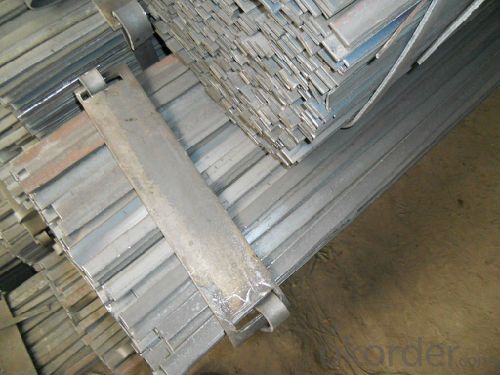
- Q: What is the difference between 304 and 316 stainless steel flats?
- The composition and properties distinguish 304 stainless steel flats from 316 stainless steel flats. 304 stainless steel is classified as an austenitic grade, meaning it lacks magnetism and boasts significant levels of chromium and nickel. It finds common usage in applications where corrosion resistance is vital, such as in the realm of food processing equipment, chemical tanks, and architectural structures. Nevertheless, 304 stainless steel may not be suitable for use in extremely corrosive environments or situations where it may come into contact with chloride solutions. In contrast, 316 stainless steel is also an austenitic grade, but it possesses the additional benefit of molybdenum in conjunction with chromium and nickel. The inclusion of molybdenum strengthens the alloy's ability to resist corrosion, particularly against chlorides and other aggressive chemicals. Consequently, 316 stainless steel is often the preferred choice for marine environments, coastal regions, and applications involving exposure to corrosive substances. Regarding mechanical properties, both 304 and 316 stainless steel flats exhibit excellent strength and durability. However, the incorporation of molybdenum in 316 stainless steel can result in slightly higher tensile strength and overall superior performance in specific conditions. Ultimately, the selection between 304 and 316 stainless steel flats hinges upon the specific application and the desired level of corrosion resistance. While 304 stainless steel is suitable for a myriad of general-purpose applications, 316 stainless steel is frequently chosen for its superior corrosion resistance, particularly in harsh environments.
- Q: Can stainless steel flats be annealed?
- Stainless steel flats can indeed undergo annealing, which is a heat treatment technique involving the heating of stainless steel to a specific temperature and subsequently cooling it gradually. This procedure effectively alleviates internal stress, enhances the material's ductility, hardness, and machinability. Moreover, annealing stainless steel flats aids in the elimination of any impurities or flaws present in the material. Nevertheless, it is crucial to acknowledge that the annealing process for stainless steel flats may differ from that of other steel types due to the alloying elements that exist in stainless steel. Therefore, it is advisable to consult the manufacturer's specific guidelines or seek advice from a metallurgical expert to determine the appropriate annealing process for stainless steel flats.
- Q: Are stainless steel flats resistant to alkaline solutions?
- Yes, stainless steel flats are generally resistant to alkaline solutions. Stainless steel is known for its corrosion resistance and its ability to withstand exposure to various chemicals, including alkaline solutions. The material contains chromium, which forms a protective layer on the surface of the steel, preventing it from reacting with alkaline substances. This makes stainless steel flats a suitable choice for applications that involve contact with alkaline solutions, such as in the chemical industry or in laboratories. However, it is important to note that the exact resistance of stainless steel flats to alkaline solutions can vary depending on the specific grade and composition of the stainless steel. Therefore, it is always recommended to consult the manufacturer's guidelines or conduct specific material testing to ensure the stainless steel flats are suitable for the intended application in alkaline environments.
- Q: Can stainless steel flats be an alternative to carbon steel flats?
- Yes, stainless steel flats can be considered as an alternative to carbon steel flats. Stainless steel has a higher resistance to corrosion and oxidation compared to carbon steel, making it suitable for applications where the material is exposed to moisture or harsh environments. Additionally, stainless steel offers better strength and durability, making it a viable option for various industries such as construction, automotive, and aerospace. However, it is important to consider specific requirements and factors such as cost, availability, and specific mechanical properties before selecting either stainless steel or carbon steel flats.
- Q: Are stainless steel flats suitable for the production of heat exchanger tubes?
- Stainless steel flats prove to be a fitting option when manufacturing heat exchanger tubes. The corrosion resistance, high heat conductivity, and durability of stainless steel make it a popular choice for heat exchangers. Shaping and welding stainless steel flats into the desired size and form for heat exchanger tubes is a straightforward process. Furthermore, they can endure demanding conditions of elevated temperatures and pressures, rendering them suitable for a range of industries including chemical processing, power generation, and HVAC systems. Moreover, stainless steel flats guarantee enduring performance and demand minimal upkeep, thus offering a cost-effective alternative for heat exchanger applications.
- Q: What are the common surface finish tolerances for stainless steel flats?
- The surface finish tolerances for stainless steel flats can vary depending on the specific application and industry standards. However, when it comes to stainless steel flats, roughness average (Ra) values are commonly used to specify surface finish tolerances. For general applications, the surface finish tolerance for stainless steel flats is typically within the range of 32-63 microinches Ra. This range indicates that the flat surface should have a roughness average falling within these values, with lower values indicating a smoother finish. In more critical industries like pharmaceutical or food processing, tighter surface finish tolerances are necessary. In these cases, the surface finish tolerances for stainless steel flats may be specified within a range of 16-32 microinches Ra or even lower. This ensures a high level of smoothness and cleanliness, which is crucial for maintaining hygiene and preventing contamination. It is important to note that the specific surface finish tolerances for stainless steel flats can be influenced by factors such as the grade of stainless steel, the manufacturing process, and any additional surface treatments applied. Therefore, consulting the relevant industry standards or specifications is essential to determine the exact tolerances required for a specific application.
- Q: Are stainless steel flats suitable for heat exchangers?
- Indeed, stainless steel flats are a viable option when it comes to heat exchangers. The outstanding corrosion resistance possessed by stainless steel renders it a widely favored selection for this purpose. It is capable of enduring elevated temperatures, warding off oxidation and scaling, thereby ensuring the heat exchanger's durability and efficiency. Furthermore, stainless steel flats offer commendable thermal conductivity, enabling an efficient transfer of heat between the fluids involved in the heat exchange process. The strength and durability of stainless steel also render it apt for enduring the pressure and mechanical stresses that heat exchangers may encounter. In conclusion, stainless steel flats are a dependable and efficient choice of material for heat exchangers.
- Q: How are stainless steel flats manufactured?
- Stainless steel flats are manufactured through a process known as hot rolling. This process involves heating a stainless steel billet or slab to high temperatures, typically around 1200 to 1300 degrees Celsius. Once the steel has reached the desired temperature, it is passed through a series of rollers to shape it into a flat profile. The first step in the hot rolling process is the roughing mill, where the stainless steel billet is reduced in thickness and width. The billet is repeatedly passed through a set of rollers, known as stands, which gradually decrease the thickness and increase the length of the steel. This process helps to refine the grain structure of the stainless steel and improve its mechanical properties. After the roughing mill, the steel is further processed in the finishing mill. Here, the stainless steel is passed through a series of stands to achieve the desired final thickness and width. The finishing mill also helps to improve the surface quality of the steel by removing any imperfections or scale that may have formed during the previous stages. Once the stainless steel flats have been rolled to the desired dimensions, they are typically coiled or cut into smaller lengths, depending on the intended application. Coiling involves winding the flat steel into a large coil, which is more suitable for storage and transportation. On the other hand, cutting the flats into shorter lengths allows for easier handling and can be tailored to specific customer requirements. After the manufacturing process, stainless steel flats may undergo additional treatments such as pickling or passivation to further improve their corrosion resistance. Pickling involves immersing the flats in an acid solution to remove any surface contaminants and oxide layers. Passivation, on the other hand, involves treating the stainless steel with a chemical solution to enhance its ability to resist corrosion. Overall, the manufacturing of stainless steel flats involves a combination of high-temperature processing, rolling, and finishing techniques to produce flat profiles with excellent mechanical properties and corrosion resistance.
- Q: What is the electrical resistivity of stainless steel flats?
- The electrical resistivity of stainless steel flats can be variable, depending on the specific grade and alloy composition of the stainless steel being utilized. Generally, stainless steel exhibits a relatively high electrical resistivity in comparison to other metals. This is attributed to the existence of chromium and other alloying elements that contribute to the formation of a passive oxide layer on the surface of stainless steel, which acts as an insulator. At room temperature, the resistivity of stainless steel flats typically falls within the range of approximately 70 to 80 microohm-cm (µΩ·cm). Nevertheless, it should be noted that this value is subject to change with alterations in temperature and various factors such as impurities and the presence of foreign substances. Therefore, it is advisable to seek accurate and up-to-date information regarding the electrical resistivity of stainless steel flats from the specific technical data provided by the manufacturer or supplier.
- Q: Can stainless steel flats be used in automotive industry?
- Yes, stainless steel flats can be used in the automotive industry. Stainless steel is known for its excellent corrosion resistance, durability, and high strength-to-weight ratio, making it an ideal material for various automotive applications. Stainless steel flats can be used in the manufacturing of car bodies, chassis, exhaust systems, fuel tanks, and other components. They provide structural support, improve safety, and enhance the overall performance of vehicles. Additionally, stainless steel flats can withstand extreme temperatures and harsh environmental conditions, making them suitable for automotive applications.
Send your message to us
Flat Stainless Steel with High Quality for Construction
- Loading Port:
- China main port
- Payment Terms:
- TT or LC
- Min Order Qty:
- 50 m.t.
- Supply Capability:
- 10000 m.t./month
OKorder Service Pledge
OKorder Financial Service
Similar products
Hot products
Hot Searches
Related keywords



